A coordinated approach to monitoring of a coregonine brood and cultured progeny in the R3 FWS hatchery program
Contributing Authors
Kevin McDonnell(USFWS, kevin_mcdonnell@fws.gov), Roger Gordon (USFWS), Amanda Ackiss (USGS)
Project Description
Broodstock management and monitoring programs are vital components of all types of stocking initiatives (e.g. Captive, Supportive, restorative, rescue). Broodstock collection and development should aim to preserve genetic diversity and minimize inbreeding and stocking programs should aim to maximize the effective population size or effective number of breeders. One key to minimize genetic risks and maximizing stocking success is coordinated monitoring within and outside the hatchery. Hatchery broodstock should be monitored over time to track: production and health of broodstock, relationships among wild collections from different years, post stocking survival and movement of different cohorts, and contributions of the survivors to wild populations. A Cisco (C. artedi) and Bloater (C. hoyi) broodline are in development within Region 3 National Fish Hatchery System and future gamete collections from wild Cisco and Bloater parents are expected to support concurrent development of additional; captive brood lines and production fish. A Coregonine Propagation Plan, which describes key culture processes, procedures and management practices has been developed by the R3 Hatchery Program to support coregonine production, but further development and integration of the genetic monitoring component is needed.
We will continue a coordinated management approach by identifying metrics and targets for genetic monitoring of coregonine brood and progeny, develop a model for data management system, process and collate data collected to date from wild Cisco and Bloater brood for a long-term monitoring program.
